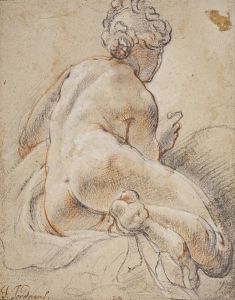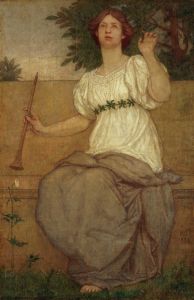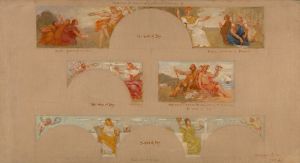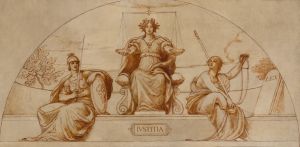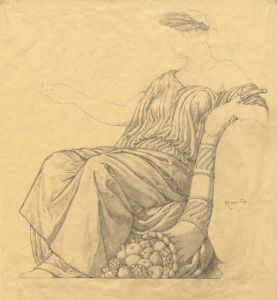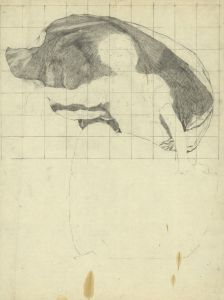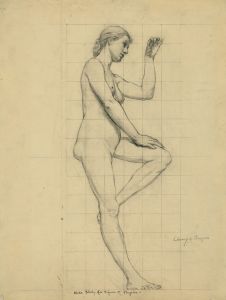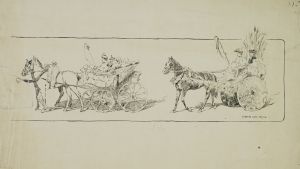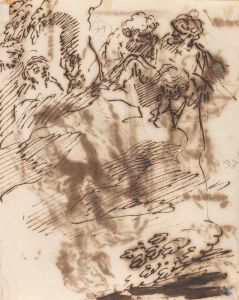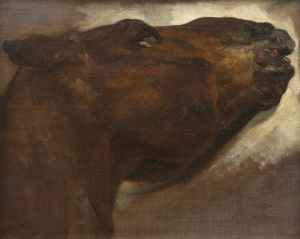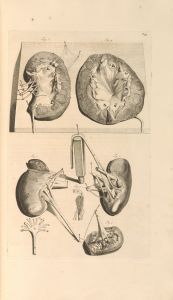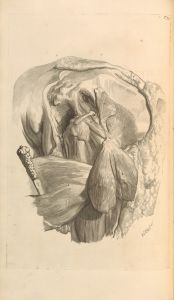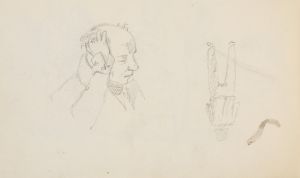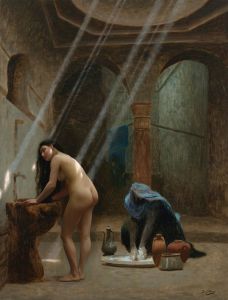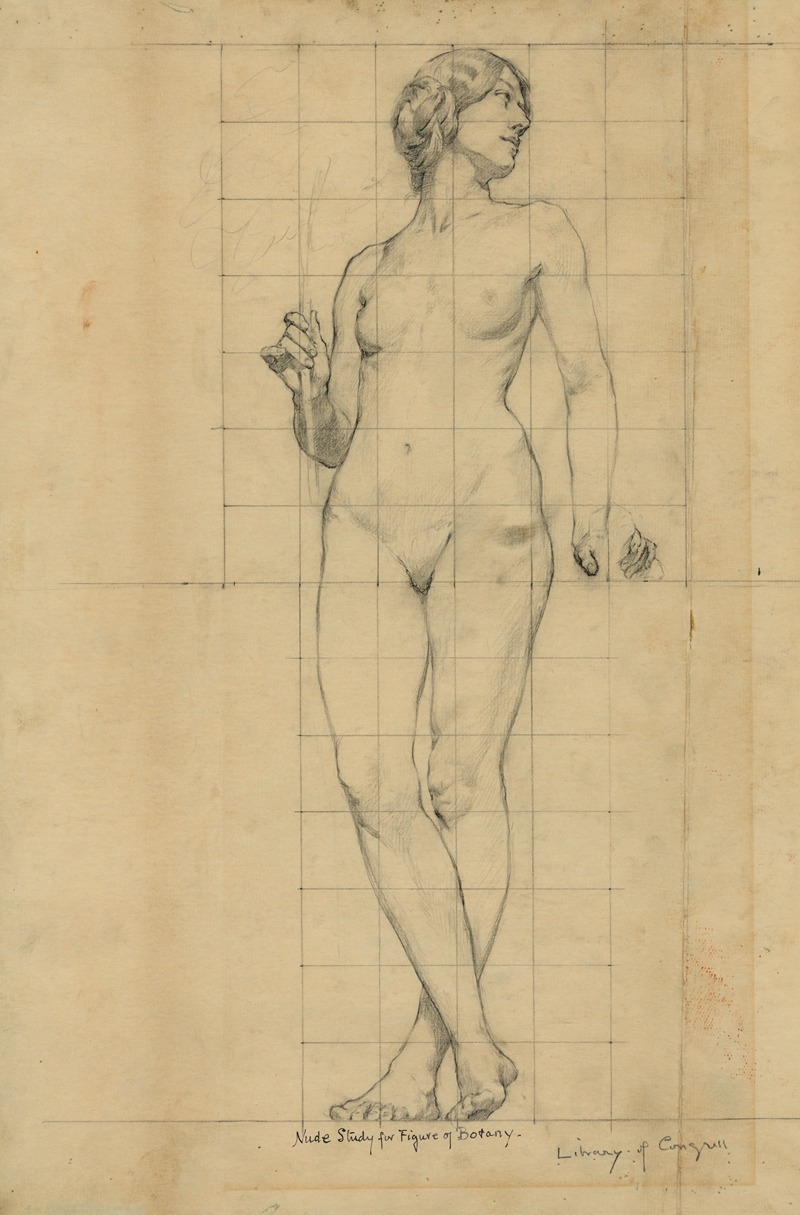
Nude study for figure of Botany
A hand-painted replica of Kenyon Cox’s masterpiece Nude study for figure of Botany, meticulously crafted by professional artists to capture the true essence of the original. Each piece is created with museum-quality canvas and rare mineral pigments, carefully painted by experienced artists with delicate brushstrokes and rich, layered colors to perfectly recreate the texture of the original artwork. Unlike machine-printed reproductions, this hand-painted version brings the painting to life, infused with the artist’s emotions and skill in every stroke. Whether for personal collection or home decoration, it instantly elevates the artistic atmosphere of any space.
Kenyon Cox (1856–1919) was an American painter, illustrator, muralist, and writer, known for his academic style and contributions to the American Renaissance movement. One of his notable works is the "Nude Study for Figure of Botany," which serves as a preparatory study for a larger mural or painting. This piece exemplifies Cox's dedication to classical techniques and his focus on the human form, which were central to his artistic philosophy.
Cox was born in Warren, Ohio, and studied at the Pennsylvania Academy of the Fine Arts before moving to Paris to further his education at the École des Beaux-Arts. Under the tutelage of renowned artists like Jean-Léon Gérôme, Cox honed his skills in drawing and painting, particularly in the academic style that emphasized realism, anatomical precision, and classical themes. Upon returning to the United States, Cox became a prominent figure in the art world, both as an artist and a critic.
The "Nude Study for Figure of Botany" reflects Cox's commitment to the academic tradition. In this work, he meticulously explores the anatomy and posture of the human figure, a practice that was essential for artists preparing for larger compositions. Such studies were often used to perfect the depiction of light, shadow, and form before committing to the final work. Cox's study likely served as a foundational element for a mural or painting that included allegorical or symbolic representations, common in his oeuvre.
Cox's interest in allegory and symbolism is evident in his larger works, where he often incorporated figures representing various disciplines, virtues, or concepts. The figure of Botany, as suggested by the title, would have been part of a broader thematic composition, possibly intended for a public building or institution, where such allegorical representations were popular during the late 19th and early 20th centuries.
Throughout his career, Cox was a vocal advocate for the academic style and often wrote about art theory and criticism. He believed in the importance of technical skill and the study of classical art, which he felt were essential for creating meaningful and enduring works. His writings and teachings influenced a generation of American artists, and his works remain a testament to his dedication to these principles.
Cox's contributions to American art extend beyond his paintings and murals. As a teacher at the Art Students League of New York, he imparted his knowledge and passion for the classical tradition to numerous students. His legacy is also preserved in his writings, which provide insight into his artistic philosophy and the cultural context of his time.
The "Nude Study for Figure of Botany" is a reflection of Kenyon Cox's artistic ideals and his role in the American Renaissance movement. It exemplifies his mastery of the human form and his commitment to the academic style, which sought to elevate American art through the principles of classical beauty and technical excellence.





